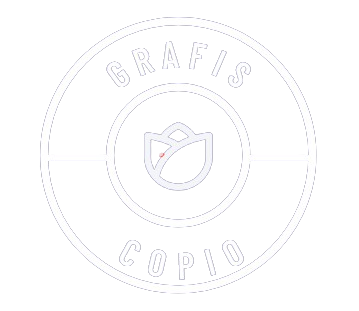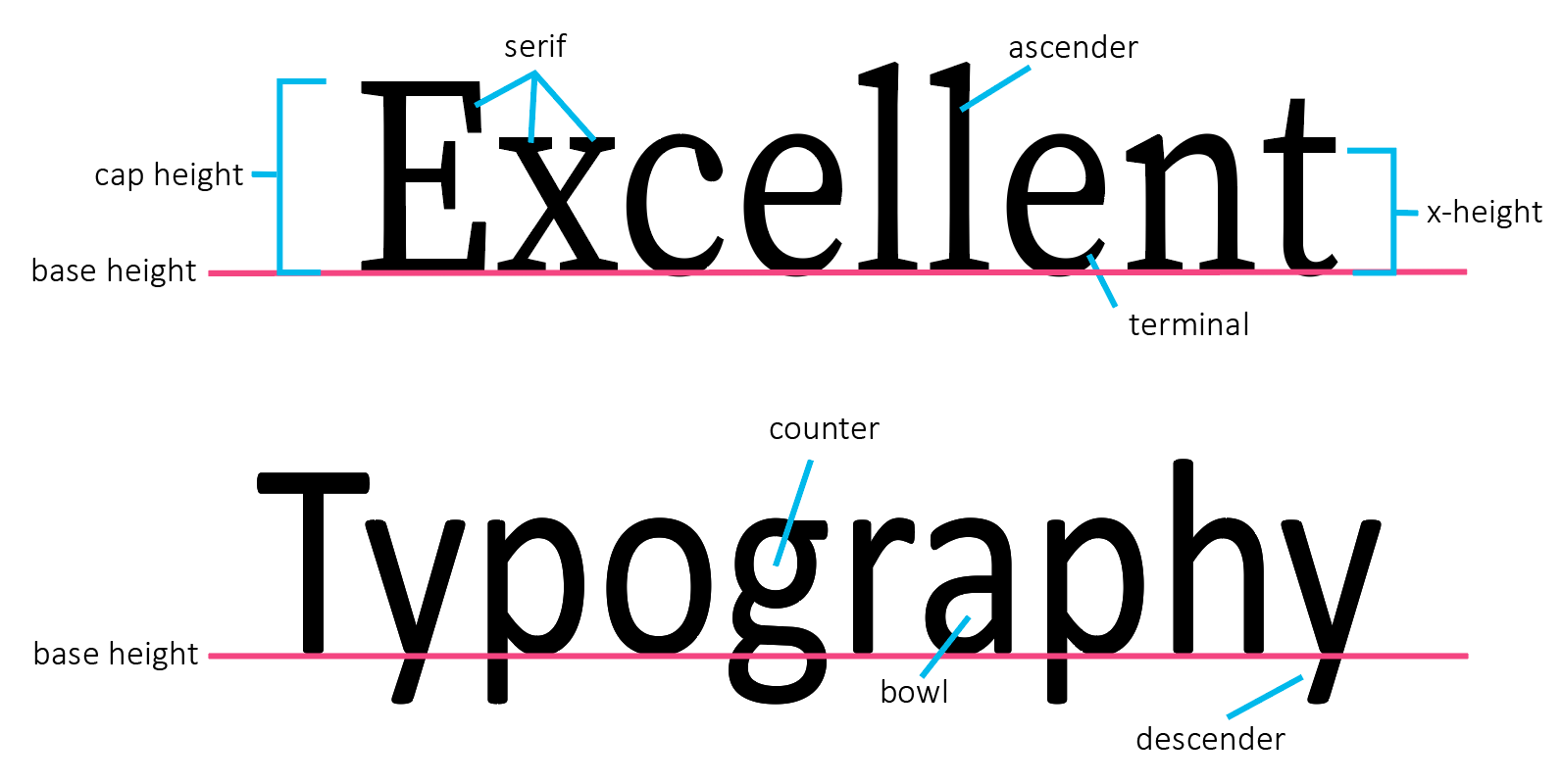Typography plays a crucial role in shaping the way we perceive and understand information in various design contexts. But what exactly is type in typography? How does it impact our reading experience and the overall design aesthetic? In this discussion, we will unravel the concept of type and its significance in visual communication. For independent businesses in the digital age, building a strong online presence involves mastering visual design elements, including typography, to create engaging and readable content. Typography choices can enhance brand identity and customer engagement, making it a key tool in your digital marketing strategies. From its fundamental definition to its evolution over time, we will explore the characteristics, styles, and principles that govern the use of typefaces. So, get ready to dive into the captivating world of type in typography and discover how it shapes the way we perceive and interact with written content.
Definition and Purpose of Type
To understand the world of type and its purpose, let’s delve into its definition and significance in the realm of design and communication. Type, in the context of typography, refers to the visual representation of letters, numbers, and symbols. It encompasses the various aspects of type anatomy, such as x-height, ascenders, descenders, apexes, counters, stems, and terminals. The purpose of type is to facilitate effective communication by conveying information in a visually appealing and legible manner.
Legibility factors, such as typeface selection, play a crucial role in determining how easily text can be read and understood. Typefaces are categorized into serif, sans serif, and decorative types. Serif typefaces have small strokes at the ends of letters, conveying a traditional and authoritative feel. Sans serif typefaces, on the other hand, are modern and bold, lacking these strokes. Decorative typefaces are used for branding, logos, and short titles, adding an aesthetic touch.
Type classification and type hierarchy are important considerations in typography. Different typefaces and their variations can be used to create a visual hierarchy, distinguishing prominent copy from standard text. Size, color, contrast, and alignment can all be used to establish hierarchy and guide the reader’s attention.
Role of Type in Communication
The role of type in communication is crucial, as it serves as a visual tool that conveys information effectively and engages the audience. Typography plays a significant role in various aspects of communication, including branding, advertising, and print media. Let’s explore how type influences these areas:
| Role of Type in Branding | Typeface Selection in Advertising | Effect of Type on Readability |
|---|---|---|
| Type is instrumental in creating a brand identity and establishing a visual connection with consumers. It helps communicate the personality, values, and essence of a brand through the choice of typeface, font size, and color. | Typeface selection in advertising is vital for capturing the attention of the target audience and conveying the intended message. The right typeface can evoke emotions, create a sense of urgency, or emphasize key information. | The type used in printed materials significantly affects readability. Factors such as font size, line spacing, and letter spacing impact how easily the text can be read. Legible type enhances comprehension and ensures that the message is effectively communicated. |
In addition to these specific roles, type serves as a visual communication tool in general. It can convey emotions, set a tone, and create a visual hierarchy that guides the reader’s attention. Type choices can evoke feelings of trust, excitement, or sophistication, depending on the context and intention.
In print media, type plays a fundamental role in delivering information to the reader. Whether it’s a newspaper article, magazine layout, or book design, the typography determines how easily the content can be consumed. Proper font selection, spacing, and formatting contribute to a pleasant reading experience and facilitate understanding.
Evolution of Typefaces
As we explore the evolution of typefaces, we uncover the fascinating journey of how different styles and designs emerged over time to shape the world of typography. This journey has been greatly influenced by various factors such as influential type designers, advancements in type technology, the impact of digital typography, the historical development of typefaces, and cultural influences on type design.
Influential type designers have played a significant role in the evolution of typefaces. From Claude Garamond and Robert Granjon in the 16th century to William Caslon and Giambattista Bodoni in the 18th century, these designers have created iconic typefaces that have stood the test of time.
Advancements in type technology have also played a crucial role in the evolution of typefaces. The invention of movable type by Gutenberg in the 15th century revolutionized the printing process, allowing for the mass production of books and the development of new typefaces.
The impact of digital typography cannot be overlooked in the evolution of typefaces. With the advent of computers and digital design tools, designers have been able to create and manipulate typefaces with greater ease and precision.
The historical development of typefaces has been shaped by the cultural influences of different time periods. From the ornate and decorative typefaces of the Rococo era to the clean and minimalist typefaces of the Bauhaus movement, cultural trends have greatly influenced the design of typefaces.
Impact of Type in Graphic Design
With its ability to evoke emotions, convey messages, and enhance the visual impact of design, type plays a pivotal role in graphic design. The impact of type on visual appeal cannot be overstated. The psychology of type selection is a crucial aspect of design, as different typefaces can evoke different emotions and create different impressions. Type is not just a tool for conveying messages, but also a branding tool that can help establish a distinct identity for a company or product. Moreover, type has a significant impact on user experience, as it affects readability and navigation within a design. Lastly, type is an essential component of storytelling in graphic design, as it can set the tone and atmosphere of a narrative. By carefully selecting and utilizing type, graphic designers have the power to captivate audiences, communicate effectively, and create memorable experiences.
Characteristics of Typeface Styles
Understanding the characteristics of different typeface styles is essential in graphic design, as it allows you to effectively convey messages, evoke emotions, and create visually impactful designs. The classification of typefaces is based on their distinct characteristics and historical development. By defining typographical elements and recognizing the influence of type on user perception, you can make informed decisions to enhance legibility in your typography.
To help you navigate the world of typeface styles, here is a table summarizing the basic classifications:
| Typeface Style | Description | Examples |
|---|---|---|
| Serif | Have small decorative strokes at the end of letters | Times New Roman, Garamond |
| Sans Serif | Do not have decorative strokes | Arial, Helvetica |
| Script | Imitate cursive handwriting | Brush Script, Lucida Handwriting |
| Monospaced | Each character occupies the same width | Courier New, Consolas |
| Display | Designed for attention-grabbing headlines | Impact, Lobster |
Importance of Typography in Web Design
Typography plays a crucial role in web design, influencing user perception and enhancing the overall user experience. Here are three reasons why typography is important in web design:
- Typographic Hierarchy in Web Design: Effective use of typographic hierarchy helps users navigate and understand the content on a website. By using different font sizes, styles, and colors, designers can create visual cues that guide users through the information hierarchy. This helps users easily identify headings, subheadings, and body text, improving readability and comprehension.
- Typography and Branding: Typography is a powerful tool for branding. Choosing the right typeface can convey the personality and values of a brand. Consistent use of typography across a website reinforces brand identity and helps users recognize and trust the brand.
- The Psychology of Type in Web Design: Different typefaces evoke different emotions and associations. Understanding the psychology of type can help designers create a website that resonates with the target audience. For example, serif typefaces can convey tradition and authority, while sans-serif typefaces can convey modernity and simplicity.
Accessibility Considerations in Typography: Typography plays a crucial role in making a website accessible to all users. Designers need to consider factors like font size, line spacing, and contrast to ensure readability for users with visual impairments or reading difficulties. By making typography accessible, designers can create an inclusive user experience.
Choosing the Right Typeface for Your Design
To choose the right typeface for your design, consider the personality and tone you want to convey to your audience. Typography plays a crucial role in branding and creating a visual identity for your design. The typeface you choose can greatly impact how your audience perceives your message. Here are some tips to help you in selecting the right typeface for your design:
- Consider the purpose and context: Think about the purpose of your design and the context in which it will be used. Is it for a formal document, a playful advertisement, or a user interface? Different typefaces convey different emotions and have varying levels of readability.
- Reflect your brand: Typography and branding go hand in hand. Your typeface should align with your brand’s personality and values. For example, a sleek and modern typeface may work well for a technology company, while a vintage-inspired typeface may be better suited for a retro-themed design.
- Prioritize legibility: Ensure that the typeface you choose is legible and easy to read, especially in user interface design. Consider factors like letter spacing, line height, and font weight to optimize readability.
- Test and iterate: Don’t be afraid to experiment and try different typefaces. Test them out in different sizes and on different devices to see how they appear. Iterate and refine your choices until you find the perfect fit.



